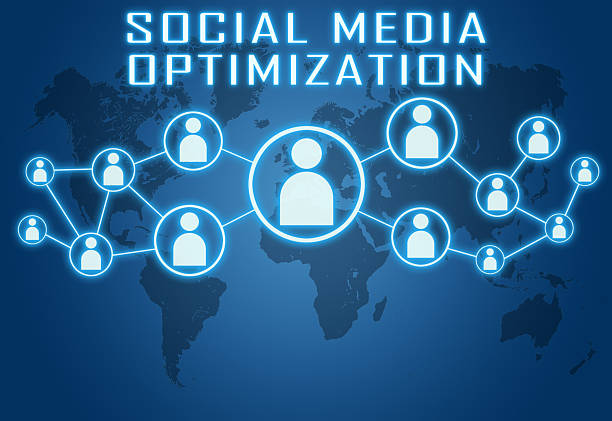Social Media Optimization is using social media platforms to promote and make your business more visible online. SMO deliberately designs, develops, and optimizes social media marketing strategies to communicate with its target audience, whereas other businesses choose to set up only consumer profiles on Facebook, Instagram, or Twitter.
There is a slight distinction between search engine optimization and monitoring search engine traffic, which is search engine optimization. While social media optimization focuses primarily on website optimization, this encompasses both on-page and off-page optimization. Posts that can scale quickly are included in this.
What Exactly Is Social Media Optimization? The most important aspects of social media optimization:
The following are the essential components of social media optimization:
- Optimized material: When it comes to SEO, the saying “content is king” is something you already know. It also applies to optimizing social media. If your content does not target the entire blogosphere, regardless of region, country, or religion, avoid social media. Good data and extensive research are required for articles published on blogs and websites. Video tutorials, statistics, memes, infographics, illustrative photos, and short stories that support your brand statement are all examples of interesting content you can include. Blogs that include lists, data, images, or statistics will appear higher in your feed. You can post content on social media in two different ways.
- Original material: Any piece of text, video, or other media that has been created in a way that has never been done before is considered original content. For instance, content is deemed original if it has never been previously published online.
- Content curated: Any kind of media that is shared online from a variety of sources is curated content.
- Optimized Design for the Web: If you want to get more votes on your blog or website and have a lower bounce rate, the design of your blog or website is very important. You will immediately lose votes if the design of your website is confusing. Ad-free access is frequently valued by social media crawlers.
- Create a profile that works best: Branding relies heavily on social media profiles. Make sure your profile picture accurately and convincingly portrays your brand. Include your contact information and use your logo in your profile. The use of a business logo has a long-lasting effect on users’ minds. A few social media clients may not visit your site. Please include your contact information in your social media bio so that we can easily be reached by phone or email.
- Keeping an eye on and enhancing social media analysis: Social media analytics monitor SMO efforts in the same way that SEO does. The Google Analytics UTM code can be used to accomplish all these things. You can link specific channels or initiatives to the traffic your website receives from social media using UTM codes and shortened URLs. To fully evaluate the level of your campaign, make use of that data in conjunction with the reports that you receive from your social media marketing tools. Other social media metrics, such as conversion rate, amplification, claps, and economic value, can help you improve your performance in addition to traffic tracking.
- Increase and enhance engagement on social media: On social media, you must connect with as many people as possible. It’s important to get the right engagement while also getting more people to your website. Only a small percentage of social media users meet demographic criteria, so these people should be linked to them. On social networking sites, hashtags can be used to find and talk to people who share your interests. You can also put a button in your social media accounts with a call to action that tells people to like and share your content or go to your website to learn more.
Strategies for making social media optimization: The use of social media to manage and expand an organization’s message and online presence is known as social media optimization or SMO. Social media optimization can be used as a digital marketing strategy to spread the word about new products and services, connect with customers, and mitigate potentially harmful news.
Online tools can be used by businesses that use multiple social media platforms to organize and distribute their content better. With the help of these tools, employees who oversee creating content for social media platforms can simultaneously schedule content for multiple platforms and respond to engagement with posts that include comments and messages from viewers. Tools like Loomly, Agorapulse, Promo Republic, Hootsuite, Buffer, and Sprout Social are popular for managing social media.
Users of social media platforms can share content over the Internet almost immediately. Therefore, a lot of businesses are trying to make content that users can share with friends and connections. Users are encouraged to share their content with enthusiastic social media platform users in this viral marketing strategy. Instead of making the content easy to find on your own, try to reach a wider audience.
Social media optimization examples include: On social media platforms, messages can be tailored to reach groups of people more effectively. Content can be tailored to specific demographic and geographic profiles by social media marketers. In hot weather, a manufacturer of soft drinks might post a message on the Internet touting how cool and refreshing their product is. You can explain to viewers in colder regions that sipping a drink evokes the feeling of a hot summer day.
Conclusion: The way you manage your marketing on social media platforms like Facebook, Twitter, and Instagram is fundamentally altered by social media optimization. We have talked about what social media optimization is and different ways to get more people to your website in this article.
